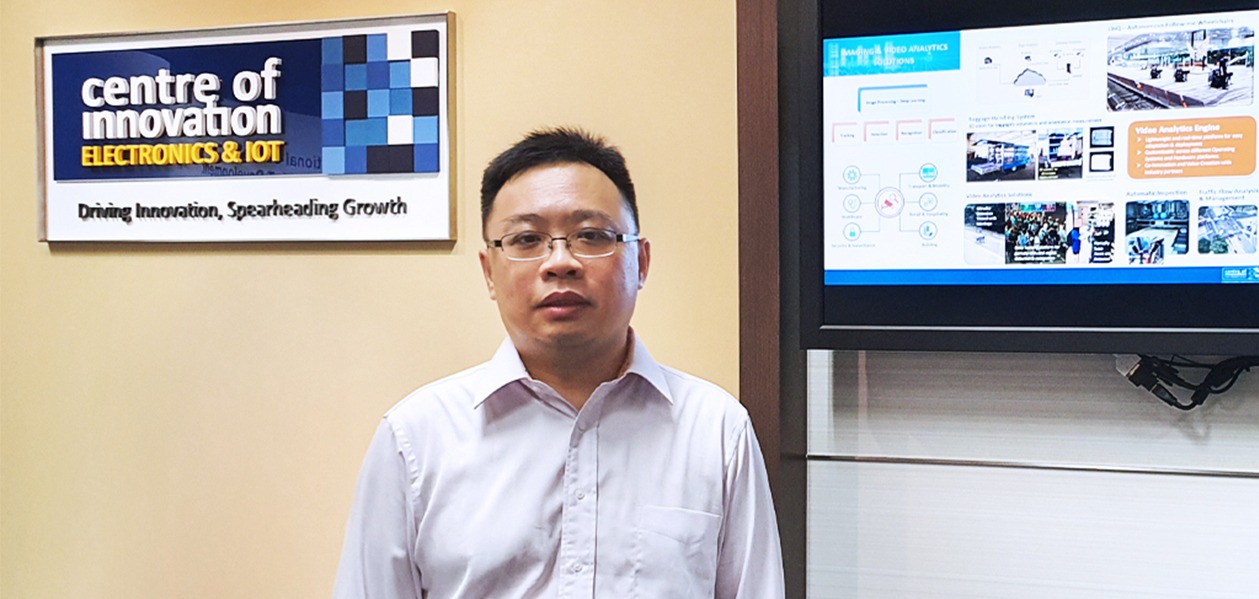Making connections with open innovationThe Centre of Innovation for Electronics & IoT supports local enterprises in developing innovations to help grow their business and give it that competitive edge.Few industries innovate as quickly as the electronics industry. Year after year, new products leveraging on the latest technologies are released, from laptops that work faster and better to smart home devices that control your home appliances. Whether it is consumer electronics or industry applications, electronics has always sought to improve itself continuously through innovation.
According to a 2018 report, the global market for consumer electronics alone is projected to reach US$1,787 billion by 2024, with a compound annual growth rate of 6%. In Singapore alone, electronics contributed to almost a quarter of the country’s manufacturing GDP in 2017, a total of nearly S$90 billion. To penetrate such competitive markets, however, is no easy feat. Not only do companies have to be innovative, they must also possess the capabilities to develop a product that will serve the latest market needs.
While enterprises can choose to build their technological capabilities in-house, they can also opt to embrace a model of open innovation. That is where the Centre of Innovation for Electronics & IoT (COI-EIoT) comes in. Established in 2008 at Nanyang Polytechnic (NYP), COI-EIoT aims to partner local enterprises to build up their capabilities for innovation and help grow their business. John Fung, Centre Manager of COI-EIoT, shared with IPI how companies can co-innovate with them to develop new solutions in emerging markets such as the Internet of Things (IoT).
1. What does open innovation mean to your organization?
For COI-EIoT, open innovation is all about empowerment. We work with partners to develop innovative, market-driven solutions and services to strengthen the competitiveness of Singapore companies. Part of our take on open innovation also involves forging strategic partnerships and developing talent to support the growth of our partners in their innovation journey.
2. How can local enterprises and SMEs benefit from working with COI-EIoT?
When working with our local enterprises and SMEs, we always strive to understand their needs first. Establishing a close working relationship enables us to co-innovate and develop new solutions that meet both their requirements and the market demands.
Beyond that, partners who work with us also benefit from our technical leadership. COI-EIoT possesses a wide range of technical expertise, ranging from wireless technologies to microelectronics, green technology and even computational intelligence. We also have facilities and staff available to support our partners through their innovation journey. Altogether, we hope that these partnerships will broaden Singapore’s innovation capabilities.
3. What programmes does COI-EIoT have to help support their partner enterprises through the process of open innovation?
We have a programme called Technology Roadmapping, or TRM, where we systematically guide a small group of SMEs through an emerging technology or market to learn about strategic product development. Interested SMEs and industry partners are invited to join the programme’s activities, typically on a weekly or fortnightly basis for a period of two to four months.
In this programme, participants will form teams to chart the trends and developments of a technology landscape they are interested in. These activities are organised to help businesses keep on top of market trends. In this way, they can learn to plan how they should acquire and develop new technologies, and identify new opportunities for innovation and sustainable growth. Through this programme, one of our SME partners learnt to harness emerging IoT technologies to create new agriculture solutions.
4. How do you encourage open innovation and collaboration in the companies you work with?
Innovation is measured by the value that a solution creates or enables. For a company to scale up innovation, collaboration is necessary. COI-EIoT believes that for an innovative idea to be fully implemented, different parties within and across organisations need to participate and collaborate actively to develop a solution. Therefore, we encourage companies to embrace collaboration and open innovation as it is essential in transforming an idea into a solution. Without full implementation, even the most innovative idea remains a mere proposal.
5. What are some of the lessons you've learnt by engaging in open innovation and do you believe that open innovation is the way forward for everybody?
From our experience of engaging in open innovation, clearly stating the role of each collaborator, and ensuring that each party actively participates is crucial for success. Open innovation is key, and most of us probably recognise its importance when working with external collaborators. We just need to become more familiar with it, and learn to embrace it.

